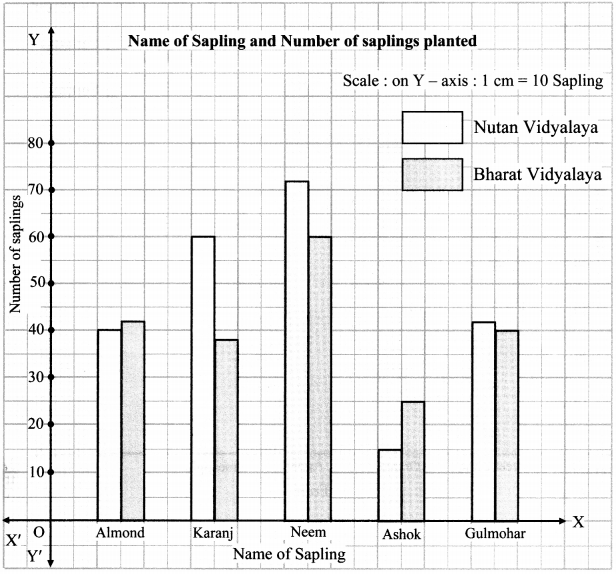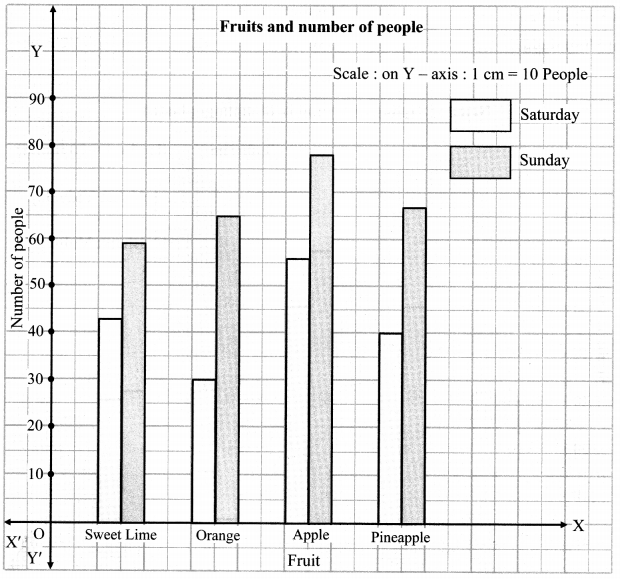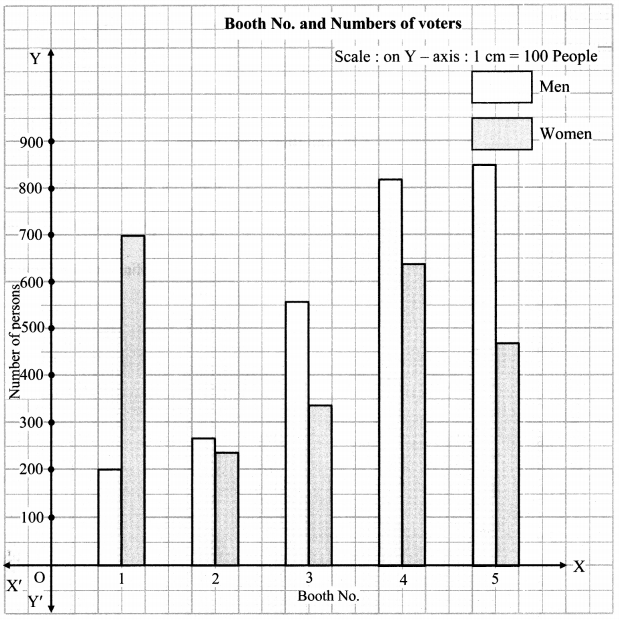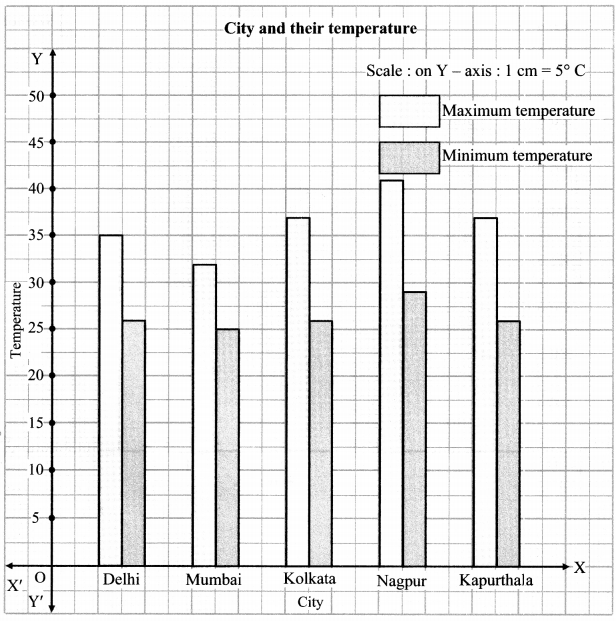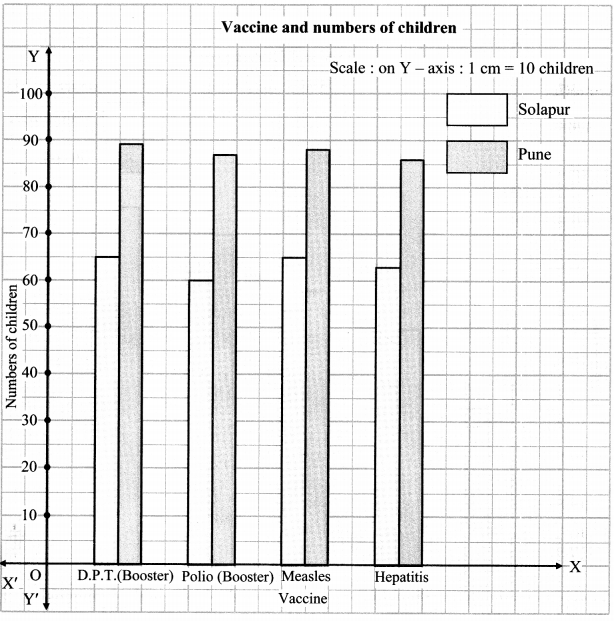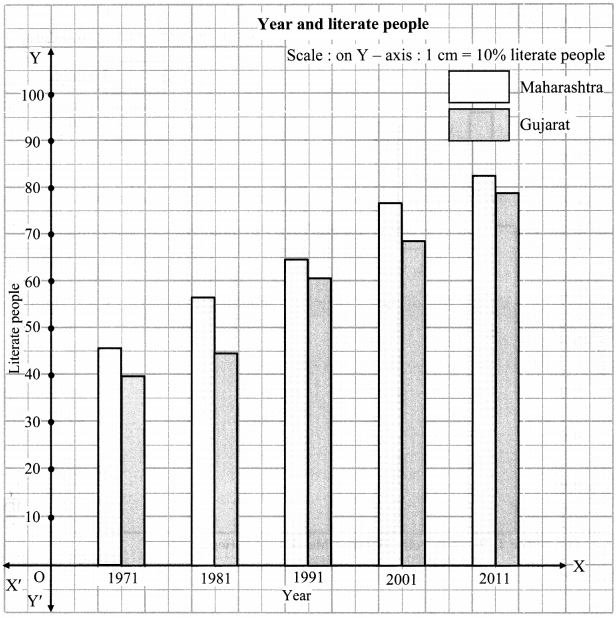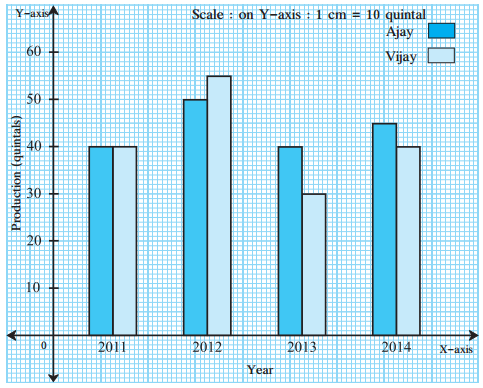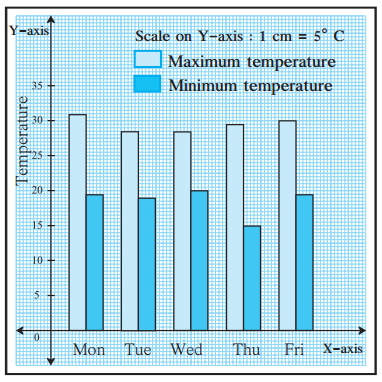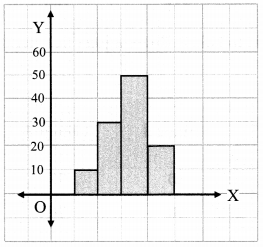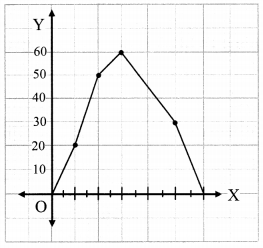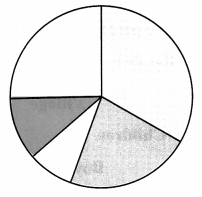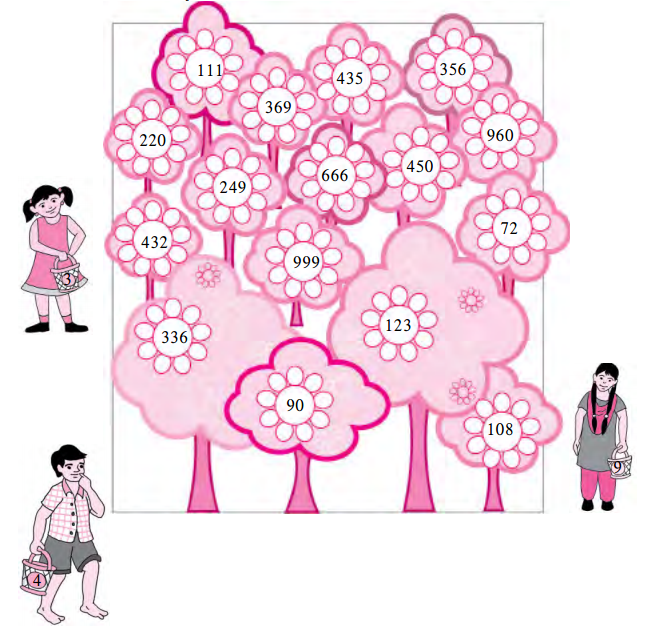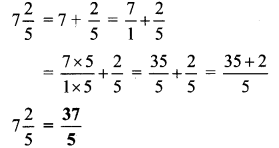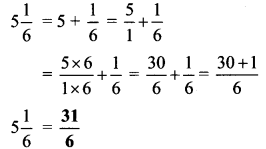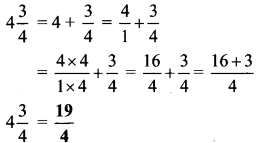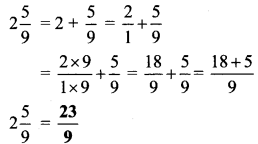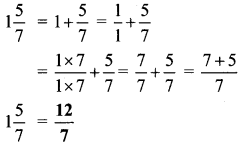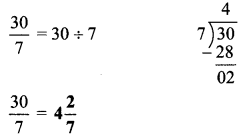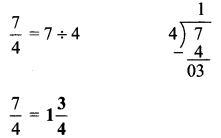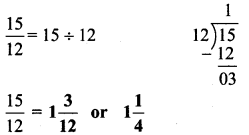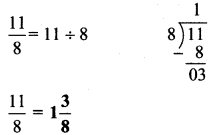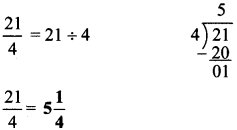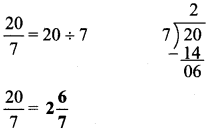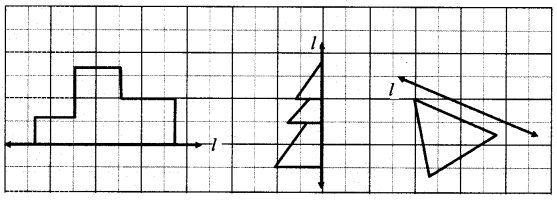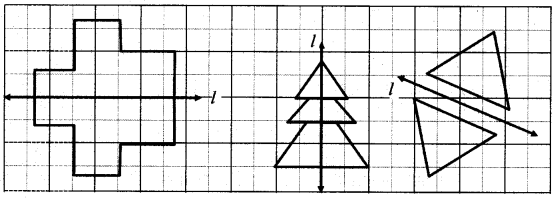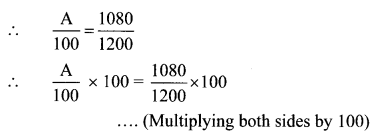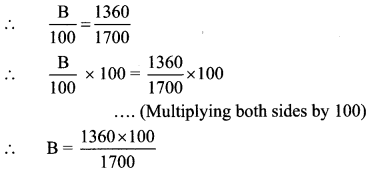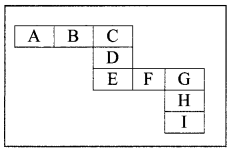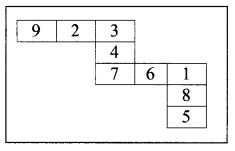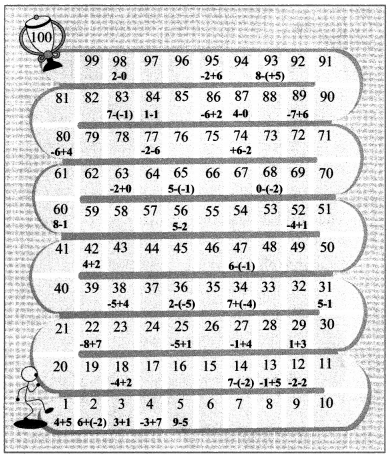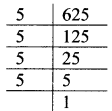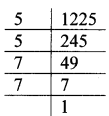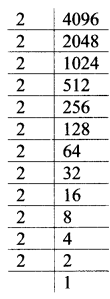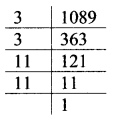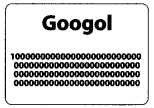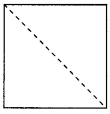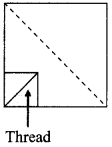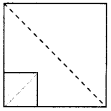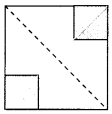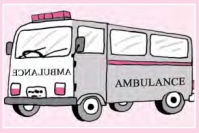Balbharti Maharashtra State Board Class 6 Maths Solutions covers the Std 6 Maths Chapter 13 Profit-Loss Class 6 Practice Set 31 Answers Solutions.
6th Standard Maths Practice Set 31 Answers Chapter 13 Profit-Loss
Question 1.
The cost price and selling price are given in the following table. Find out whether there was a profit or a loss and how much it was.
| Ex. | Cost price (in Rs) | Selling price (in Rs) | Profit or Loss | How much? |
| i. | 4500 | 5000 | ||
| ii. | 4100 | 4090 | ||
| iii. | 700 | 799 | ||
| iv. | 1000 | 920 |
Solution:
i. Cost price = Rs 4500
Selling price = Rs 5000
Selling price is greater than cost price.
∴ There is a profit.
∴ Profit = Selling price – Cost price
= 5000 – 4500
Profit = Rs 500
ii. Cost price = Rs 4100
Selling price = Rs 4090
Cost price is greater than selling price.
∴ There is a loss.
∴ Loss = Cost price – Selling price
= 4100 – 4090
∴ Loss = Rs 10
iii. Cost price = Rs 700
Selling price = Rs 799
Selling price is greater than cost price.
∴ There is a profit.
∴ Profit = Selling price – Cost price
= 799 – 700
∴ Profit = Rs 99
iv. Cost price = Rs 1000
Selling price = Rs 920
Cost price is greater than selling price.
∴ There is a loss.
∴ Loss = Cost price – Selling price
= 1000 – 920
∴ Loss = Rs 80
| Ex. | Cost price (in Rs) | Selling price (in Rs) | Profit or Loss | How much? |
| i. | 4500 | 5000 | Profit | Rs 500 |
| ii. | 4100 | 4090 | Loss | Rs 10 |
| iii. | 700 | 799 | Profit | Rs 99 |
| iv. | 1000 | 920 | Loss | Rs 80 |
Question 2.
A shopkeeper bought a bicycle for Rs 3000 and sold the same for Rs 3400. How much was his profit?
Solution:
Cost price = Rs 3000, Selling price = Rs 3400
∴ Profit = Selling price – Cost price
= 3400 – 3000
= Rs 400
The shopkeeper’s profit was Rs 400.
Question 3.
Sunandabai bought milk for Rs 475. She converted it into yogurt and sold it for Rs 700. How much profit did she make?
Solution:
∴ Cost price = Rs 475, Selling price = Rs 700
∴ Profit = Selling price – Cost price
= 700 – 475
= Rs 225
∴ Sunandabai made a profit of Rs 225.
Question 4.
The Jijamata Women’s Saving Group bought raw materials worth Rs 15000 for making chakalis.
They sold the chakalis for Rs 22050. How much profit did the WSG make?
Solution:
Cost price of raw materials = Rs 15000
Selling price of chakalis = Rs 22050
∴ Profit = Selling price – Cost price
= 22050 – 15000
= Rs 7050
∴ The Women’s Saving Group made a profit of Rs 7050.
Question 5.
Pramod bought 100 bunches of methi greens for Rs 400. In a sudden downpour, 30 of the bunches on his handcart got spoil. He sold the rest at the rate of Rs 5 each. Did he make a profit or a loss? How much?
Solution:
Cost price of 100 bunches of methi green = Rs 400
Since, 30 bunches got spoil,
∴ Remaining bunches of methi green = 100 – 30 = 70
Selling price of 1 bunch of methi green = Rs 5
∴ Selling price of 70 bunches of methi green = 5 x 70 = Rs 350
Cost price is greater than selling price
∴ Pramod suffered a loss.
Loss = Cost price – Selling price
= 400 – 350
= Rs 50
∴ Pramod suffered a loss of Rs 50.
Question 6.
Sharad bought one quintal of onions for Rs 2000. Later he sold them all at the rate of Rs 18 per kg. Did he make a profit or incur a loss? How much was it?
Solution:
Cost price of one quintal onions = Rs 2000
Selling price of 1 kg onions = Rs 18
Since, 1 quintal = 100 kg
∴ Selling price of 1 quintal (100 kg) onions = 18 x 100 = Rs 1800
Cost price is greater than selling price
∴ Sharad suffered a loss.
∴ Loss = Cost price – Selling price
= Rs 2000 – Rs 1800
= Rs 200
∴ Sharad incurred a loss of Rs 200.
Question 7.
Kantabai bought 25 saris from a wholesale merchant for Rs 10000 and sold them all at Rs 460 each. How much profit did Kantabai get in this transaction?
Solution:
Cost price of 25 saris = Rs 10000
Selling price of 1 sari = Rs 460
∴ Selling price of 25 saris = 460 x 25 = Rs 11500
Selling price is greater than cost price.
∴ Profit = Selling price – Cost price
= 11500 – 10000
= Rs 1500
∴ Kantabai made a profit of Rs 1500.
Maharashtra Board Class 6 Maths Chapter 13 Profit-Loss Practice Set 31 Intext Questions and Activities
Question 1.
Pranav and sarita had set up stalls in a fun fair. Study the data given below and answer the questions. (Textbook pg. no. 65)
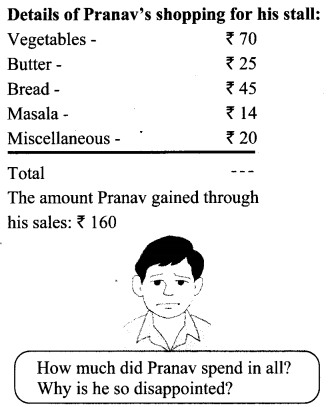
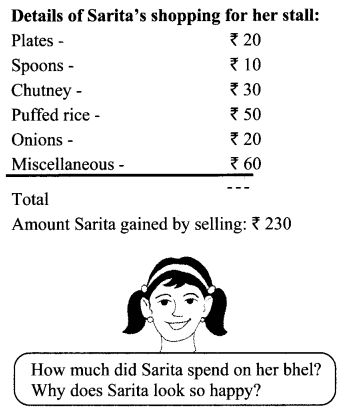
Solution:
Total amount invested by Pranav = 70 + 25 + 45 + 14 + 20 = Rs 174
Amount gained through sale = Rs 160
∴ Selling price is less than invested price.
∴ Pranav incurred a loss in his Pav Bhaji business. Hence, he is disappointed.
Total amount invested by Sarita = 20 + 10 + 30 + 50 + 20 + 60 = Rs 190
Amount gained by selling = Rs 230
∴ Selling price is more than invested price.
∴ Sarita made profit in her business. Hence, she is happy.
Question 2.
For the above example,
- If Sarita had bought twice as much, would she have gained twice as much?
- What should Pranav do the next time he sets up a stall to sell more pav bhaji and make more gains? (Textbook pg. no. 66)
Solution:
- If Sarita would have bought twice as much, she would have prepared double quantity of food items. Hence, she would have gained twice as much.
- Next time Pranav sets a stall, he must sell pav bhaji at a higher cost than he had sold earlier in order to make more gains.
